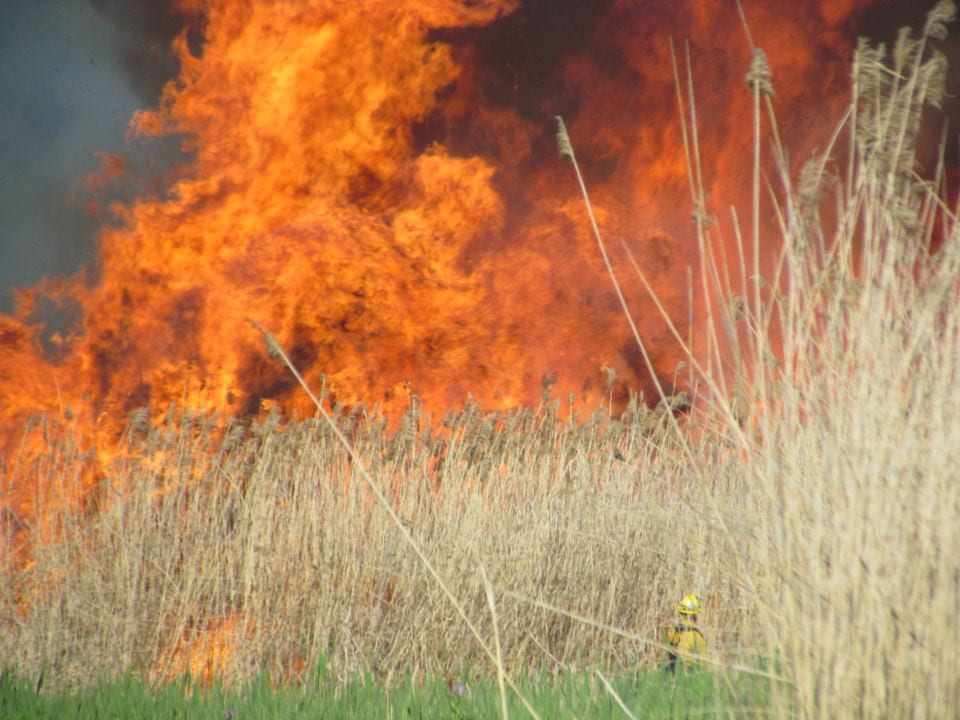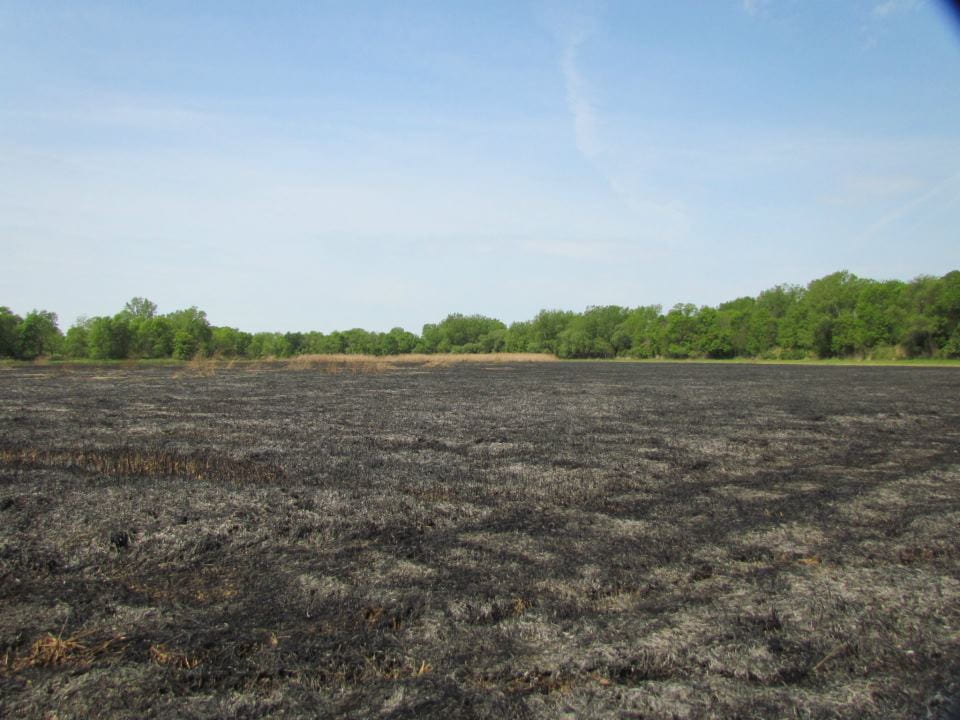The Point au Sable Natural Area is an unmodified estuarine wetlands, one of the few in the Lake Michigan ecosystem. This area plays a very important role for the migratory birds passing through. This is the main reason why this area has stayed protected from development. In recent findings, it was shown over 200 different bird species in one year have stopped to enjoy the Point au Sable Natural Area. For more information about the Point au Sable Natural Area click on the link http://www.uwgb.edu/biodiversity/natural-areas/pt-au-sable/.
Recently the Point au Sable Natureal Area was burned in an effort to try and stop the Phragmites invasion. Phragmites australis, also known as the common reed, is an exotic invasive species. It can grow up to 3-4 meters.
It was estimated the flames reached 75-100 feet. If you look closely you can see a burn crew member just at the base of the Phragmites.
According to the Arboretum Project Coordinator, Joshua Martinez, “the lagoon should be a mixture of open water, submerged aquatic plants, emergent marsh, cattail marsh, and sedge meadow. The Lagoon system is ever changing with water levels of the great lakes (more specifically the bay). As a result, Point au Sable was historically a heavily disturbed site, not because of people but rather because of water level cycles of the great lakes. Phragmites was present on the site in the last flooding of the lagoon in 2000, and once the water levels had receded the Phragmites was able to spread very fast because of its growth patterns of stolons and rhizomes. This was because the soil surface of the lagoon was exposed with little vegetation on it and allowed the Phragmites to spread fast with little resistance from native plant competitors. In addition, the lakes levels have not been following their typical water level cycle, and have been staying low for longer than expected and provides great potential for Phragmites to spread aggressively.”
For more detail on Phragmites australis and it’s growth patterns click on the link http://www.uwgb.edu/biodiversity/herbarium/invasive_species/phraus01.htm.
The final product after the burn. We are now able to see straight across the lagoon.
Looking at the photos below we can see that Phragmites has greatly increased as the water levels have decreased over the years.


Phragmites must be monitored because they “threaten the ecological health of wetlands as well as the Great Lakes coastal shoreline.” Phragmites can
- over take native plants and animals
- block shoreline views
- reduce access for swimming, fishing, and hunting
- create fire hazards from dry plant material
One of the most effective procedures to control the Phragmites population is to use an integrated pest management approach. This approach includes
- treating the area with herbicides
- mechanical removal (cutting, mowing, burning)
- annual maintenance
We have taken the first steps in burning Phragmites and we will continue to treat the Point au Sable area by using herbicides to control the Phragmites population.
References:
Michigan Department of Environmental Quality
http://www.michigan.gov/deq/0,4561,7-135-3313_3677_8314-178183–,00.html


